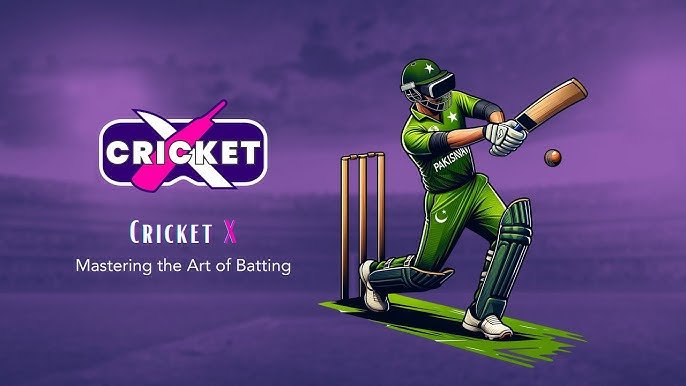Cricket in VR: A Game-Changer for Fans and Players
Cricket is a massive global following sport with a rich history. From traditional formats like Test matches to fast-paced T20 games, the sport has continuously evolved to cater to the changing preferences of fans. Now, a new technological innovation is taking cricket to the next level—Virtual Reality (VR). Cricket in VR is redefining how the sport is experienced, offering unprecedented immersion and interactivity for both players and spectators.
What is VR Cricket?
Virtual Reality (VR) is a simulated 3D environment that users can interact with, often through specialized equipment like VR headsets, motion controllers, and sensors. In the context of cricket, VR enables users to experience the game as if they were part of the action, whether as a player on the field or a spectator in the stands.
Imagine putting on a VR headset and stepping onto a virtual cricket pitch. You can face deliveries from world-class bowlers, perfect your batting technique, or even captain a team in a high-stakes match. For fans, VR can simulate the experience of watching a live game from the best seats in the stadium, all from the comfort of their homes.
The Technology Behind VR Cricket
VR Cricket combines several advanced technologies to create a seamless and immersive experience:
- VR Headsets: Devices like Oculus Rift, HTC Vive, and PlayStation VR are essential for accessing VR cricket applications. These headsets provide a 360-degree view of the virtual environment.
- Motion Tracking: Sensors track the movement of players, capturing real-time actions like batting, bowling, and fielding. This data is translated into the virtual world for accurate gameplay.
- Artificial Intelligence (AI): AI-powered algorithms simulate realistic cricket scenarios, from ball trajectories to player behaviors, making the experience more authentic.
- Haptic Feedback: Specialized controllers and gloves provide physical feedback, such as the sensation of hitting the ball or catching it, enhancing realism.
Benefits of Cricket in VR
The integration of VR into cricket offers numerous advantages:
- Enhanced Fan Engagement: Fans can enjoy a highly immersive experience, feeling as if they are part of the game. This is especially valuable for those unable to attend live matches.
- Training for Players: Professional cricketers can use VR to refine their skills. VR simulations allow players to practice against different types of bowlers or fielding setups, improving their decision-making and performance.
- Accessibility: VR Cricket makes the game more accessible to people who may not have the opportunity to play or watch live cricket due to geographical or financial constraints.
- Educational Value: Aspiring players and coaches can learn techniques and strategies by observing high-quality VR simulations, which offer a detailed perspective on gameplay mechanics.
- Entertainment: Beyond serious applications, VR cricket games are a source of fun and entertainment for casual players and gaming enthusiasts.
Applications of Cricket in VR
VR Cricket has a wide range of applications, including:
- Fan Experiences: VR platforms like Oculus and PlayStation VR offer cricket games where fans can participate in virtual matches or relive iconic moments in cricket history.
- Player Training: Professional teams are incorporating VR into their training regimens. For example, players can practice facing fast bowlers without the physical strain of repeated deliveries.
- Broadcasting Innovations: Broadcasters are using VR to offer unique viewing angles and interactive experiences, making televised cricket more engaging.
- Event Promotion: VR is being used in promotional events and fan zones to attract audiences and provide a taste of the action.
Challenges in Implementing Cricket in VR
Despite its potential, VR cricket faces some challenges:
- Cost: High-quality VR equipment and software can be expensive, making it less accessible for the average consumer.
- Technical Limitations: Achieving high levels of realism requires sophisticated hardware and software, which can be resource-intensive.
- User Experience: Prolonged use of VR headsets can cause discomfort for some users, such as eye strain or motion sickness.
- Content Development: Creating realistic and engaging VR cricket simulations requires significant time, expertise, and investment.
The Future of Cricket in VR
The future of cricket in VR looks promising as technology continues to advance. With the integration of augmented reality (AR) and AI, VR cricket experiences will become even more immersive and realistic. Stadiums might soon offer VR booths where fans can “play” alongside their favorite players or experience the match from the perspective of an umpire.
Moreover, as the cost of VR equipment decreases, its accessibility will increase, enabling more people to enjoy cricket in this revolutionary format. Collaborations between cricket boards, tech companies, and gaming developers will further drive innovation in this space.
Conclusion
VR Cricket is not just a technological novelty; it is a transformative tool that bridges the gap between the physical and digital worlds. By offering immersive experiences, enhancing player training, and creating new ways for fans to engage with the sport, VR is shaping the future of cricket. As this technology continues to evolve, it promises to bring cricket closer to fans and players than ever before, ensuring that the sport remains exciting and relevant for generations to come.
For more interesting blogs kindly visit: empireadda



